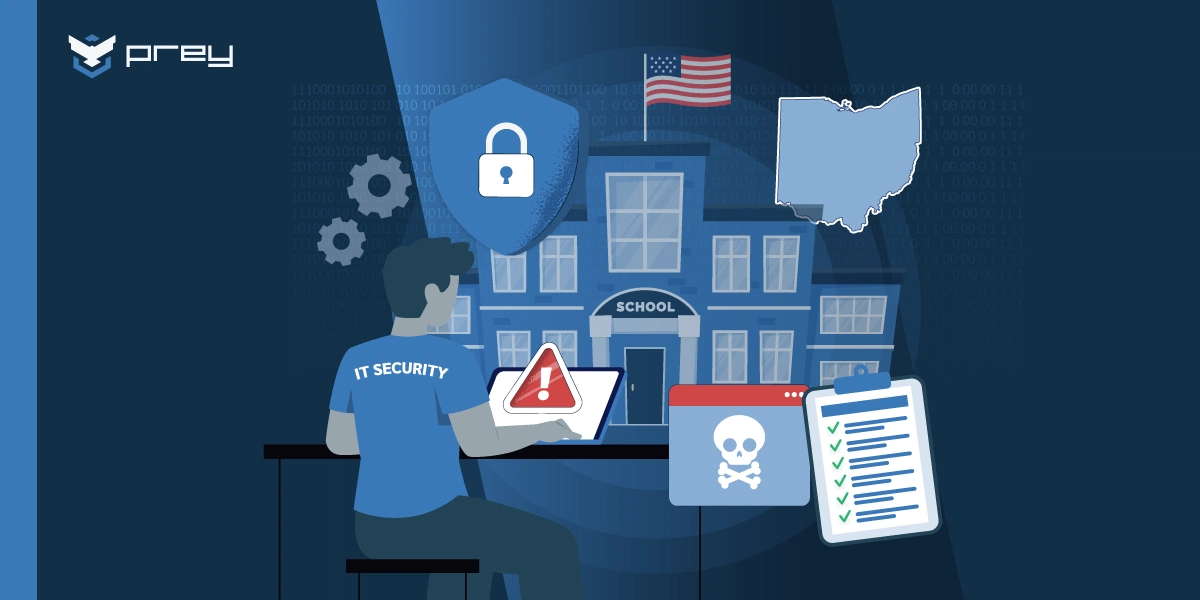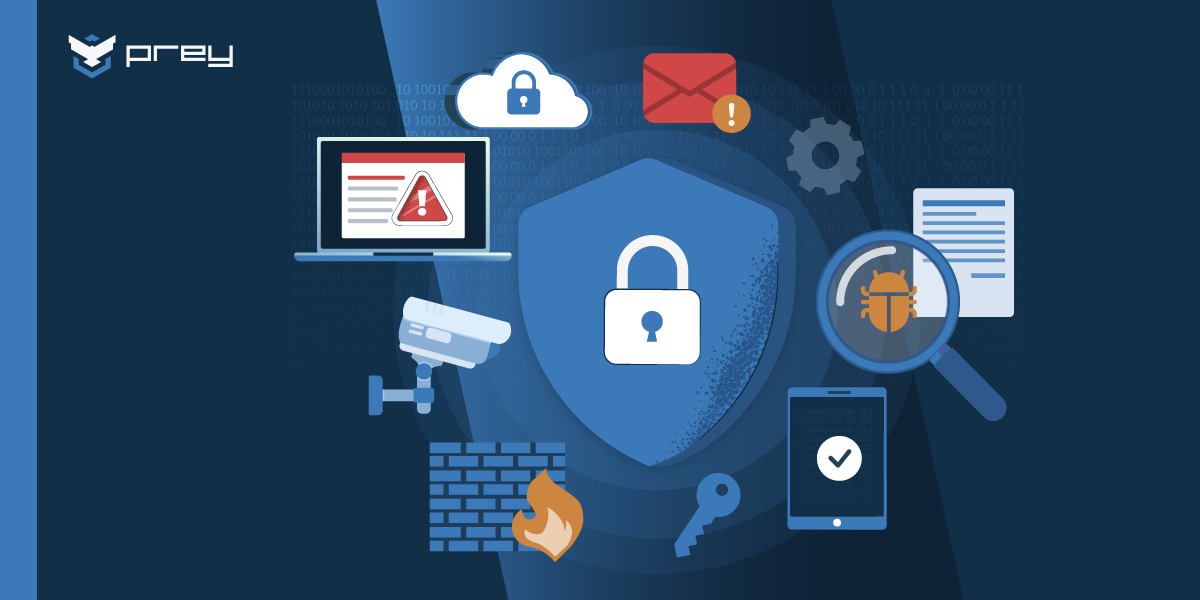IT security teams have witnessed a significant uptick in AI cybersecurity threats in recent years. This surge is attributed to the sophisticated capabilities AI technologies offer, enabling attackers to devise more complex, adaptive, and harder-to-detect threats. The ability of AI to analyze vast amounts of data rapidly accelerates the pace at which cyber-attacks evolve, presenting a growing challenge for organizations worldwide.
The role of AI in cybersecurity is paradoxical, as it can be both beneficial and harmful at the same time. On one hand, it empowers defenders with tools that can predict, detect, and respond to threats with unprecedented speed and accuracy. On the other, it provides malicious actors with a powerful arsenal to craft attacks that are more deceptive and difficult to intercept. This dual-edged sword of AI in cybersecurity highlights the need for continuous innovation in defensive strategies to keep pace with these evolving threats.
AI-powered malware and the new generation of cyber threats
AI-powered malware represents a new frontier in cyber threats, making use of artificial intelligence to adapt, learn, and execute attacks with unprecedented sophistication. These advanced threats are designed to outsmart traditional security measures, posing a significant challenge to cybersecurity defenses.
Examples of AI-driven attacks include:
- Web scraping bots: Automated programs that mimic human browsing to steal data from websites.
- Phishing emails: AI-enhanced to tailor deceptive messages that mimic legitimate sources, increasing the likelihood of recipients falling victim.
- Intelligent hacking tools: Tools that can autonomously find vulnerabilities in software and systems.
- Adaptive malware: Programs that change their behavior to avoid detection by security software.
- Automated attack planning: Systems that can plan and execute multi-stage cyber attacks without human intervention.
AI cyber threats are a growing concern: the NCSC’s assessment
According to an authoritative assessment by the National Cyber Security Centre (NCSC), AI will almost certainly increase both the volume and impact of cyber attacks over the next two years. Their findings highlight that AI is particularly effective in automating reconnaissance and enhancing social engineering attacks, such as phishing and impersonation, making them more difficult to detect. AI’s ability to analyze and synthesize data at an unprecedented scale allows cybercriminals to target victims with increased precision.
The NCSC report emphasizes that AI isn’t just a tool for highly capable state actors. While these actors are best positioned to leverage AI in advanced cyber operations, such as malware generation and data exfiltration, less-skilled cybercriminals are also benefiting.
By using publicly available AI models, novice hackers, and hackers-for-hire can now conduct more sophisticated attacks with minimal technical knowledge. This capability uplift is expected to contribute significantly to the global ransomware threat as AI enables faster and more efficient network penetration and data theft.
Looking ahead to 2025, the NCSC foresees that AI’s increasing commoditization will make it accessible to a wider range of cyber threat actors, lowering the barriers to entry for even less experienced attackers. The report also warns that AI will continue to intensify the challenges in cyber resilience, as threat actors use AI to speed up the identification of vulnerable systems and exploit them before defenses can respond.
How cybercriminals are using AI
Hackers are increasingly harnessing AI to elevate their strategies, creating tools to automate attacks, personalize phishing emails, and develop malware that can evade detection. AI's ability to process vast datasets enables cybercriminals to identify vulnerabilities at an unprecedented scale and speed, making cyber threats more dynamic and dangerous.
Malware development
AI plays a critical role in the evolution of malware, enabling the creation of advanced programs that can learn from their environment, adapt to countermeasures, and execute attacks with minimal human intervention. This new generation of AI-driven malware presents a moving target for cybersecurity defenses, complicating detection and mitigation efforts.
A prime example of this technological leap is BlackMamba. This AI-crafted malware, an AI-crafted malware successfully evaded detection by top-tier Endpoint Detection and Response (EDR) systems in an experimental study conducted by Hyas. This malware employs a polymorphic keylogger, ingeniously synthesizing its keylogging function in real-time through ChatGPT, to stealthily capture and relay every keystroke of its unsuspecting victims.
Ai-enhanced phishing attacks
By using AI, hackers can craft phishing emails with remarkable precision, targeting individuals with messages that are highly personalized and convincing. This use of AI not only increases the success rate of phishing campaigns but also makes it harder for recipients to distinguish malicious emails from legitimate communications.
A notable illustration of this was presented at Black Hat USA 2021 by Singapore's Government Technology Agency. During the event, the security team reported on an experiment where simulated spear phishing emails, crafted by both humans and OpenAI's GPT-3 technology, were sent to internal users. The outcome was telling: a significant margin of recipients were more inclined to click on links within the AI-generated emails than those penned by humans.
AI in ransomware attacks
The rise of AI in ransomware attacks has dramatically increased the efficiency and precision of these threats. By leveraging AI, cybercriminals can scan vast networks for vulnerabilities much faster, identifying weak points that traditional methods might miss. AI also enables more sophisticated attacks, allowing ransomware to adapt in real-time and evade detection, making it harder for organizations to defend themselves.
A notable example is the DarkSide ransomware attack that disrupted critical infrastructure in 2021. While not exclusively AI-driven, it showcased how AI-enhanced tactics, such as automated network reconnaissance, can streamline the process of targeting and infecting high-value systems. AI played a key role in refining how the ransomware moved through the network, selecting targets for maximum impact.
AI in social engineering attacks
AI has revolutionized social engineering by enhancing tactics like spear-phishing and impersonation attacks. Using tools like deep learning and natural language processing (NLP), attackers can now generate convincing fake identities and mimic human conversations with remarkable accuracy.
These AI-driven systems can study a target's behavior patterns, communication style, and even tone, creating highly personalized and believable scams. As a result, social engineering attacks are not only more effective but also harder to detect.
One real-world example involved AI-generated voice impersonation in a 2019 attack where cybercriminals mimicked the voice of a CEO to defraud a company of hundreds of thousands of dollars.
Deepfake technology in cyber fraud
Deepfakes, synthetic media in which a person's likeness is replaced with someone else's without consent, have emerged as a potent tool in cyber fraud. This technology allows malicious actors to create convincing audio and video clips, leading to sophisticated social engineering attacks.
For instance, a finance worker at a Tokyo multinational firm was deceived into transferring $25 million to fraudsters, who used deepfake technology to impersonate a company executive.
AI in cybersecurity: defending from attacks
AI's capacity for analyzing vast datasets in real-time allows for the identification of patterns and anomalies that would elude human analysts, enhancing the detection of sophisticated cyberattacks.
Moreover, AI-driven security systems can automate responses to threats, significantly reducing the window of opportunity for attackers. This proactive stance not only bolsters defense mechanisms but also streamlines the management of security operations, making AI an invaluable ally in the ongoing battle against cybercrime.
Advanced Detection and Response Strategies: Implementing AI and machine learning technologies in cybersecurity enables more advanced detection and response strategies. These tools can autonomously monitor networks for suspicious activities, learning from each interaction to continually improve their detection capabilities.
Defensive AI Tools and Strategies: Among the leading edge of defensive AI tools are machine learning-based anomaly detection systems, AI-driven threat intelligence platforms, and automated incident response solutions. These tools excel in identifying and neutralizing threats before they can cause significant damage.
Examples of defensive AI tools and strategies include:
- Behavioral Analytics: Uses AI to detect unusual patterns in network behavior, indicating potential security threats.
- Anomaly Detection Systems: Spotting unusual patterns or activities that could signify a security breach.
- Automated Security Incident Response: AI systems that can automatically respond to detected threats, reducing the need for human intervention.
- Threat Intelligence Platforms: Collecting and analyzing information on emerging threats to keep security measures one step ahead.
- Network Traffic Analysis: Utilizes AI to monitor network traffic in real-time, identifying and mitigating suspicious activities automatically.
Defending against AI-enhanced attacks
Fortifying cyber defenses becomes crucial in the face of AI-enhanced attacks. Organizations must adopt a multi-layered security approach that includes the latest AI-driven protection technologies.
This strategy involves updating traditional security measures and integrating advanced AI tools that can predict, detect, and neutralize sophisticated AI-powered threats.
Payment and Fund Transfer Protections: Organizations must implement stringent controls and verification processes to combat financial fraud stemming from phishing and deepfake scams. This includes multi-factor authentication, behavior analysis for unusual transaction patterns, and employee education on recognizing fraudulent requests. Such measures significantly reduce the risk of financial loss, safeguarding the organization’s assets and it’s customer’s trust.
Developing an Incident Response Plan: Preparing for rapid response to AI-powered cyber incidents is crucial for minimizing potential damage. An effective AI incident response plan should include immediate isolation of affected systems, analysis of the breach to prevent future incidents, and communication strategies to manage external relations.
Some other proactive defense strategies include:
- Regularly updating and patching systems to mitigate vulnerabilities.
- Employing AI-driven security solutions for real-time threat detection.
- Conducting continuous security training for staff to recognize and respond to emerging threats.
- Implementing strong access controls and encryption to protect sensitive data.
- Engaging in information sharing with industry peers to stay informed about new threats and best practices.
Ethical concerns around AI in cybersecurity
Attributing AI-driven cyber attacks poses a unique set of challenges, as the technology can obscure the origins of these malicious activities, complicating the process of holding perpetrators accountable. This issue is compounded by the fact that on average, hackers launch attacks 26,000 times a day, demonstrating the frequency and potential anonymity afforded by AI technologies in cybercrime.
Moreover, according to a Forbes Advisor survey, 51% of organizations are integrating AI into cybersecurity strategies. This highlights the technology's growing influence and the resultant need for robust international regulations and ethical guidelines for this complex emerging technology.
The necessity for such frameworks is further emphasized by the rapid expansion of AI in the cybersecurity market, which is projected to grow from USD 17.4 billion in 2022 to around USD 102.78 billion by 2032. This significant growth reflects the increasing reliance on AI for both offensive and defensive cybersecurity measures, highlighting the urgent need for global cooperation in establishing norms and regulations that address the ethical use of AI in cybersecurity and ensure a collective defense against AI-driven threats.






